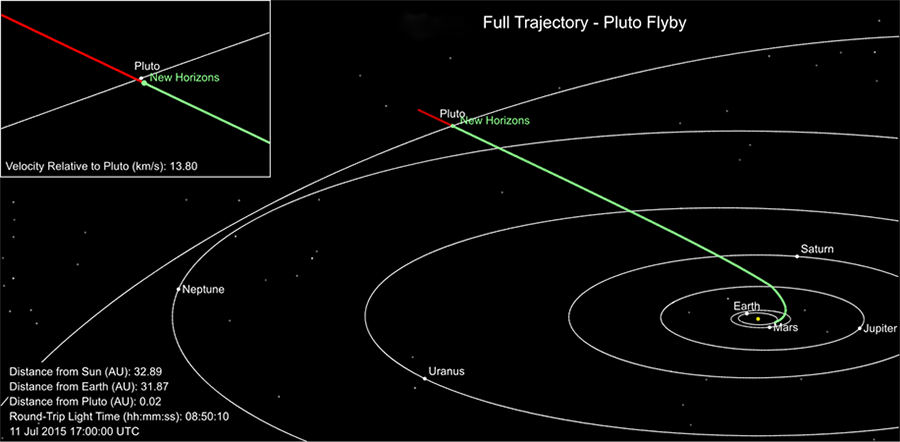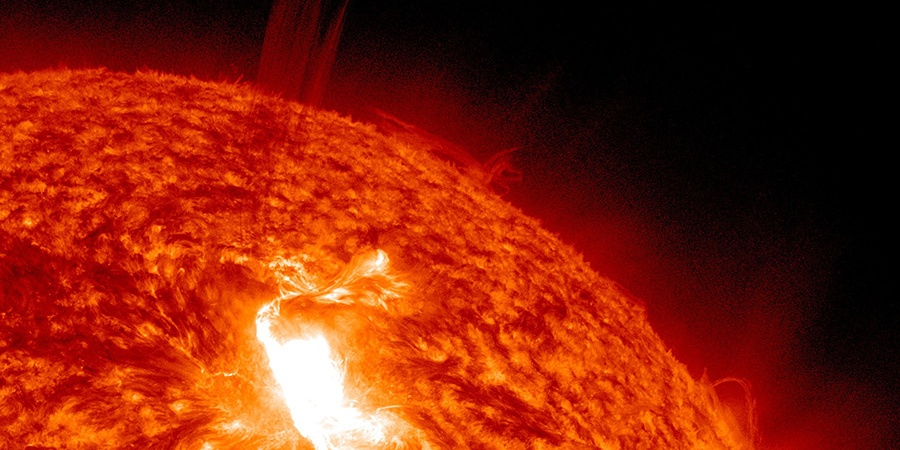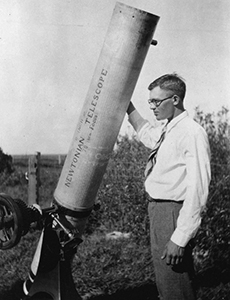
Discovered by humanity less than 100 years ago, Pluto has largely remained an enigma ever since. It was not until 2015 that the first spacecraft from Earth – an uncrewed probe sent by NASA – made a flyby of the distant planet, passing within 7,750 miles of the surface after traversing three billion miles since its launch nearly 10 years prior.
Now it is your turn to test your knowledge about Pluto. This latest edition of QuizMe contains 15 questions about the former ninth planet, its moons, and our exploration of Pluto, now classified by scientists as a dwarf planet.
Results
Congratulations. Are you already studying to become a deep space explorer?
Keep on learning and perhaps one day you can help with exploratory missions that will expand our knowledge of the universe.

#1. How many moons orbiting Pluto have been discovered?
There are five moons currently known to be orbiting Pluto: Charon (1978), Nix (2005), Hydra (2005), Kerberos (2011), and Styx (2012). All of these were similarly named for mythological characters and locations associated with the underworld of Greek and Roman mythology just like the planet itself.

#2. What are the two primary components that make up most of Pluto?
Pluto is currently believed to be 2/3 rock and 1/3 ice formed from water, with the former composing the core of the dwarf planet and the latter surrounding it. Its surface is coated in ice; while some of it is made of water, the vast majority of the surface’s covering is volatile gas ice made mostly of nitrogen with small amounts of methane, and carbon monoxide.

#3. True or False: Charon is one of Pluto’s discovered moons.
Charon is one of the five moons that scientists have discovered orbiting Pluto. It is named for the boatman Charon who forded souls across the river Styx in the underworld, and it also honors the wife of James Christy whose name was Karen. It is the largest of the dwarf planet’s known moons (almost half its size) and was discovered by James Christy and Robert Harrington with the former first noticing it on June 22, 1978.

#4. What is the name of the first spacecraft to do a flyby of Pluto?
New Horizons was launched on January 19, 2006. It did a flyby of Pluto and Charon but did not orbit Pluto. It also visited Jupiter on its way to Pluto.

#5. True or False: Pluto is the only known dwarf planet in the solar system.
Pluto was considered a planet until August 2006 when its status was changed to that of dwarf planet by the International Astronomical Union because it fails to meet one of the three criteria the IAU deems necessary for a body to be classified as a planet. Specifically, it is not gravitationally dominant to the point where there are no other masses of similar besides its satellites and other bodies under its gravitation influence near it. There are many dwarf planets in our solar system, but only five officially recognized/classified as such by the IAU: Pluto, Eris, Ceres, Haumea, and Makemake, with the first two being the biggest ones.

#6. How many Earth years does it take Pluto to orbit the Sun?
Pluto is 3.7 billion miles (5.9 billion kilometers or 39 astronomical units) away from the Sun. On its 248-year-long orbit it reaches as close as 30 astronomical units to and as far away as 49.3 astronomical units from the Sun.

#7. Fill in the blank. Pluto lies in the _________.
Pluto is one of a number of icy, rocky bodies that occupy the Kuiper Belt, a disc-shaped zone that lies beyond Neptune’s orbit and bears similarities to the asteroid belt. The Kuiper Belt is also the origin of some comets.

#8. True or False: Pluto is smaller than Earth’s moon.
At 1,430 miles (2,302 kilometers) in diameter, the dwarf planet is only approximately 1/6 the size of Earth (1/2 the size of the U.S.!). It is estimated to be around 2/3 the width of our moon.

#9. The Roman god Pluto (the counterpart of the Greek god Hades) was known as the god of what?
Pluto is well-known as the Roman god of the underworld in Roman mythology. The Romans also designated him the god of wealth. The dwarf planet was dubbed so for its dark and gloomy nature.

#10. True or False: Pluto was named by an 11-year old girl.
Venetia Burney, an 11-year old English schoolgirl from Oxford became the unwitting namer of Pluto when she suggested the name to her grandfather at breakfast one day who suggested it to an astronomer who in turn suggested it to the astronomers at the Lowell Observatory without telling her. Pluto retains the distinction of being the only world named by an 11-year old girl.

#11. Pluto’s orbit is __________?
Pluto’s orbit is strange in that it takes an oval path rather than a circular one. It is almost on its side as it spins because its axis of rotation is tilted 57 degrees and it goes from east to west like Uranus and Venus.

#12. How long does it take sunlight to reach Pluto?
It takes light 5.5 hours to travel from the Sun to Pluto. In comparison, it only takes 8.3 minutes for sunlight to reach Earth.

#13. How many Earth days is a Pluto day equivalent to?
A single day on Pluto is equivalent to 6.4 days on Earth. This is how long it takes the dwarf planet to make a complete rotation. Pluto’s moon Charon takes the same amount of time to complete one rotation.

#14. True or False: Pluto has surface features like glaciers on it.
Far from being flat, Pluto boasts numerous terrains and geological structures, including glaciers, valleys, craters, and plains. Scientists theorize that it may once have had a subsurface ocean.

#15. Who is credited for discovering Pluto?
Clyde Tombaugh, an astronomer, officially discovered the dwarf planet while at the Lowell Observatory in Arizona in 1930. Percival Lowell, another astronomer, had previously suggested its existence based on observations he made of oddities in Neptune’s and Uranus’s orbits. It was his prediction of its location (and those of other astronomers) that Tombaugh used to help pinpoint Pluto.








